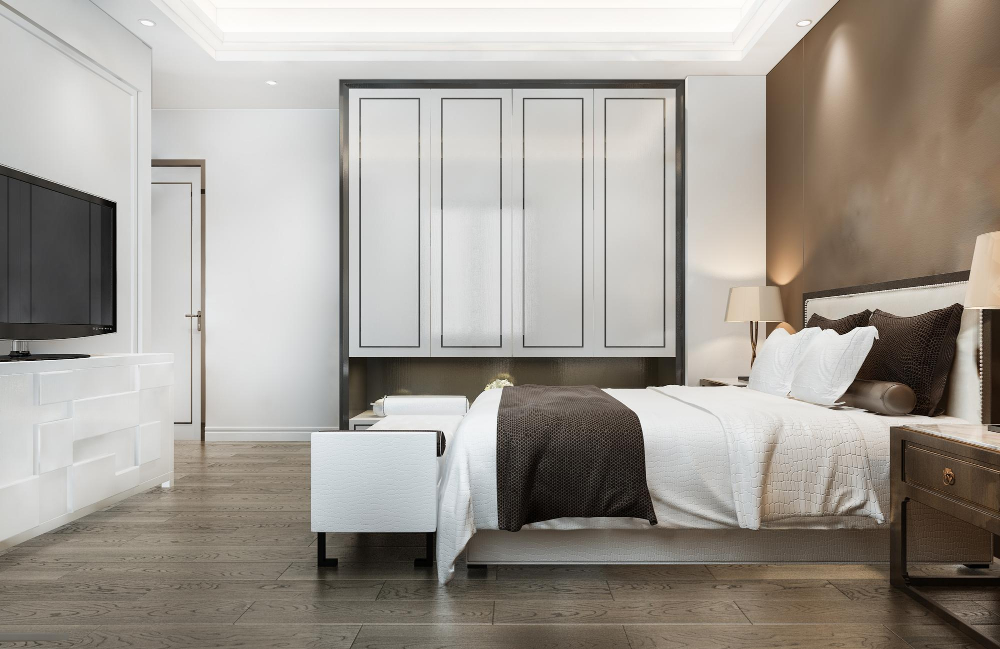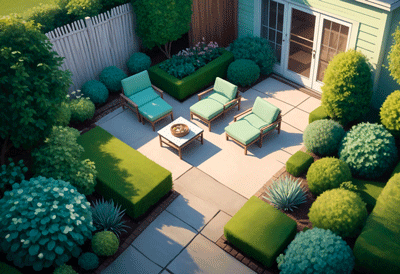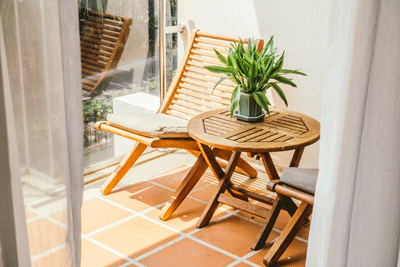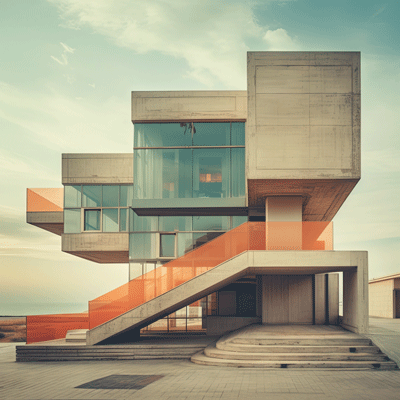
Interior & Exterior Design
Bedroom Design & Decoration
Essential Tips for Designing a Serene and Functional Bedroom
Your bedroom should be a personal sanctuary—a place for rest, relaxation, and recharging. Good design is key to creating this atmosphere.
1. Start with the Purpose: Rest and Recharge
Prioritize Comfort: Above all else, the bedroom must be comfortable. Every design choice should contribute to a sense of peace and well-being.
Define Your Needs: Do you need a reading nook, a workspace (use with caution!), a vanity area, or ample storage? Plan the room’s layout around your primary needs while keeping rest as the main focus.
2. Master the Layout: The Bed is the King
The Focal Point: The bed is almost always the focal point. Place it centrally on the main wall, ideally facing the door but not directly in line with it (this is known as the “command position” in Feng Shui).
Create Clear Pathways: Ensure there is easy access to both sides of the bed (if it’s a double) and clear paths to the door, windows, and closet. Aim for at least 2 feet of walking space.
Nightstand Necessities: Each side of the bed should have a nightstand or surface within easy reach. The standard height is level with the top of your mattress or a few inches taller.
Balance the Room: If you have a large bed on one wall, balance it with a dresser or a pair of chairs on the opposite wall to create visual equilibrium.
3. Cultivate a Calming Color Palette
Stick to Soothing Hues: Colors greatly impact mood. Opt for soft, muted, or neutral colors for a restful environment. Think:
Neutrals: Soft whites, beiges, greiges, and light grays.
Cool Tones: Pale blues, lavenders, and sage greens.
Earthy Tones: Warm taupes and soft terracottas.
The 60-30-10 Rule: Apply this rule for a balanced look.
60% Dominant color (walls, perhaps the bedding).
30% Secondary color (curtains, area rug, an accent wall).
10% Accent color (throw pillows, artwork, small decor).
4. Layer the Lighting for Mood and Function
Ambient Lighting: Provide a soft, overall glow. This can be from a ceiling fixture (like a dimmable chandelier or flush mount) or recessed lights.
Task Lighting: Essential for specific activities. Use bedside lamps (with warm-toned bulbs) for reading. Wall-mounted sconces are a great space-saving option.
Accent Lighting: Add warmth and dimension. Consider LED strips under the bed frame, a small lamp on a dresser, or fairy lights for a cozy touch.
Dimmers are Key: Installing dimmer switches allows you to adjust the lighting to match the time of day and your mood, which is crucial for winding down.
5. Invest in Your Bedding and Textiles
The Bedding: This is your most important investment. A high-quality mattress, comfortable pillows, and soft, breathable sheets (like cotton or linen) are non-negotiable for good sleep.
Layer Textures: Create a hotel-like feel by layering different textures—a knitted throw, velvet pillows, a crisp cotton duvet cover, and a chunky knit blanket.
Window Treatments: Choose curtains that can block out light for better sleep. Blackout liners or layered sheers with thicker drapes offer both style and function.
6. Incorporate Smart and Cozy Storage
Declutter for Peace: A cluttered room leads to a cluttered mind. Keep surfaces clear.
Hidden Storage: Utilize under-bed storage boxes, ottomans with storage, and bedside tables with drawers.
Vertical Space: Use tall dressers or built-in wardrobes to maximize floor space. Open shelving can be stylish but requires neat organization.
7. Add Personality and Finishing Touches
Soft Rug: Place a soft area rug under the bed to create a warm surface for your feet in the morning. It should extend at least 2 feet on either side and at the foot of the bed.
Meaningful Art and Decor: Choose artwork that brings you joy and peace. Avoid overly stimulating or stressful images. Personal photos, serene landscapes, and abstract art are great choices.
Bring in Nature: A small potted plant or a fresh bouquet of flowers can purify the air and add a touch of life and color. Low-light plants like Snake Plants or ZZ Plants are perfect for bedrooms.
Scent: Consider a subtle, calming scent with a diffuser (lavender, chamomile) or a high-quality linen spray.
Common Bedroom Design Mistakes to Avoid
Ignoring Scale: A bed that’s too large for the room will make it feel cramped. Always measure your space and your furniture.
Poor Lighting: Relying on a single, harsh overhead light is a common mistake. Always layer your light sources.
Skimping on Storage: Without adequate storage, clutter will accumulate and destroy the serene atmosphere.
Forgetting the Fifth Wall: The ceiling is your “fifth wall.” A fresh coat of white paint or a subtle color can make the room feel taller and more finished.
Remember, your bedroom is your personal retreat. The best design is one that feels uniquely comforting and restorative to you.






